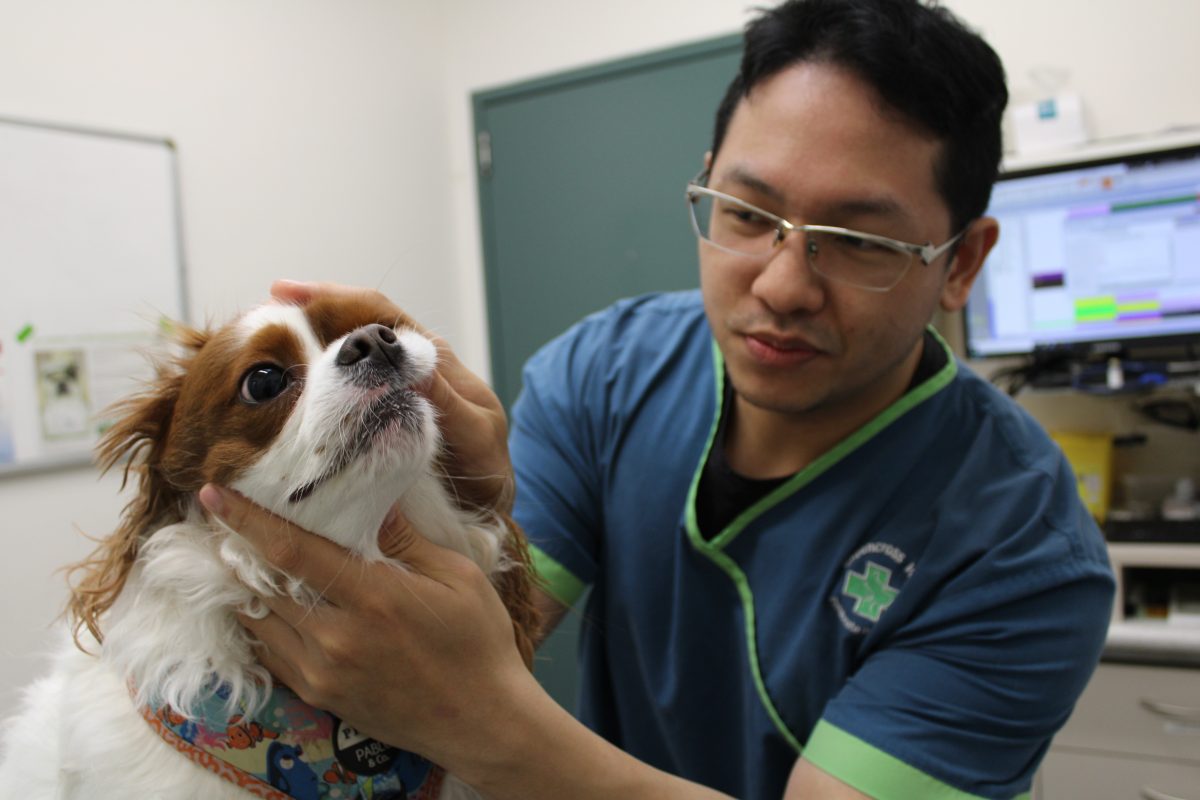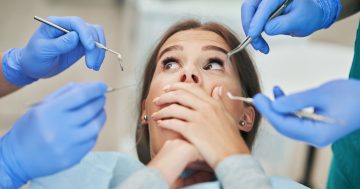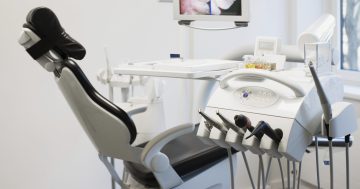
Dr Harry Chang is urging owners to stay on top of their pet’s dental hygiene. Photo: Keeli Dyson.
Dog owners are being urged to stay on top of their pet’s dental hygiene with veterinarians seeing an increase in disease and pain in young animals.
Taking care of your canine’s teeth is about more than just stopping smelly breath, with dental disease having the potential to be debilitating and painful for our furry friends.
“They can get periodontal disease which is essentially the loss of tissue around the teeth and usually with many of these cases when it gets worse the teeth become not functional, become infected with bacteria, become loose and effectively need to come out,” Greencross Crown Street veterinarian Dr Harry Chang said.
“In cases you can see a swelling on the face, that’s what we call tooth root abscess, it means the infection has gone through the teeth to the bone.”
Dr Harry said they had seen an increase in dental-related conditions in recent years, particular among small breeds such as poodle-crosses.
“At Greencross locally we do see in smaller breeds roughly 12 per cent have some form of dental disease, maybe just a mild gingivitis and inflammation of the gum not necessarily a loss of tissue, before they’re three,” he said.
“It then jumps to a quarter.
“There have actually been studies saying dogs under four, about half of them have some form of dental disease, so it is most likely under recognised.
“Over 10 years old that number shoots up to 80 or 90 per cent.”
While there are some signs to look out for, Dr Harry said it isn’t always obvious.
“It is difficult, and I think that a reason it is underdiagnosed compared to humans, is that dogs will eat no matter what; they can be very food-driven and some dogs will continue to eat even though they may have dental pain,” he said.
“They may be very careful with how they eat, maybe only use one side of their mouth, sometimes during chewing may yelp and drop their food and some people notice they may just gulp the whole thing down.
“If a dog is not as food-driven or the pain is simply too much you will notice it might drink more water to satisfy the hunger but won’t eat anything too solid, will have a preference of wet food compared to dry food, a lot of drooling which can have blood in it, and some will just refuse to eat.
“By the time you notice some signs happening, chances are it has affected them to the point that there is definitely pain involved.”
Treatment can be extensive with pets needing to undergo general anaesthetic for cleaning using ultrasonic dental scaler and polishing, with x-rays also often needed to determine whether there are problems under the gum.
But there are ways to help prevent or slow the process, with brushing your dog’s teeth the best way, if it is safe to do so.
“At the end of the day it’s about cleaning the space in between the teeth and that’s why smaller dogs are more prone to it, just simply because their teeth are more crowded, there’s not enough space between them and things can get stuck easily,” Dr Harry said.
He said it was best to desensitise animals when they were young and train them to be comfortable with you touching their mouths and teeth.
For adult dogs, starting with a small cloth and rubbing in a circular motion near the edge of their mouth can help them get used to the idea.
“But don’t push their boundaries; don’t pin them down to do it; the more force people apply usually the more the dog is to be adverse to it.”
Types of food and treats can also play a role in prevention, although they’re not as good as a deep clean.
“Water additive is a thing but it’s not as effective,” Dr Harry said.
“For a small dog a small chew may be fine but for a large dog and they just swallow the whole thing it’s obviously not going to help.
“The downside compared to brushing would be that dogs, like humans, have a preferred way of chewing, so one side is likely cleaner than the other and whichever you choose make sure it is a certified product from the VOHC – the Veterinary Oral Health Council – they approve the products.”
For more information about dental health visit the Greencross website.















